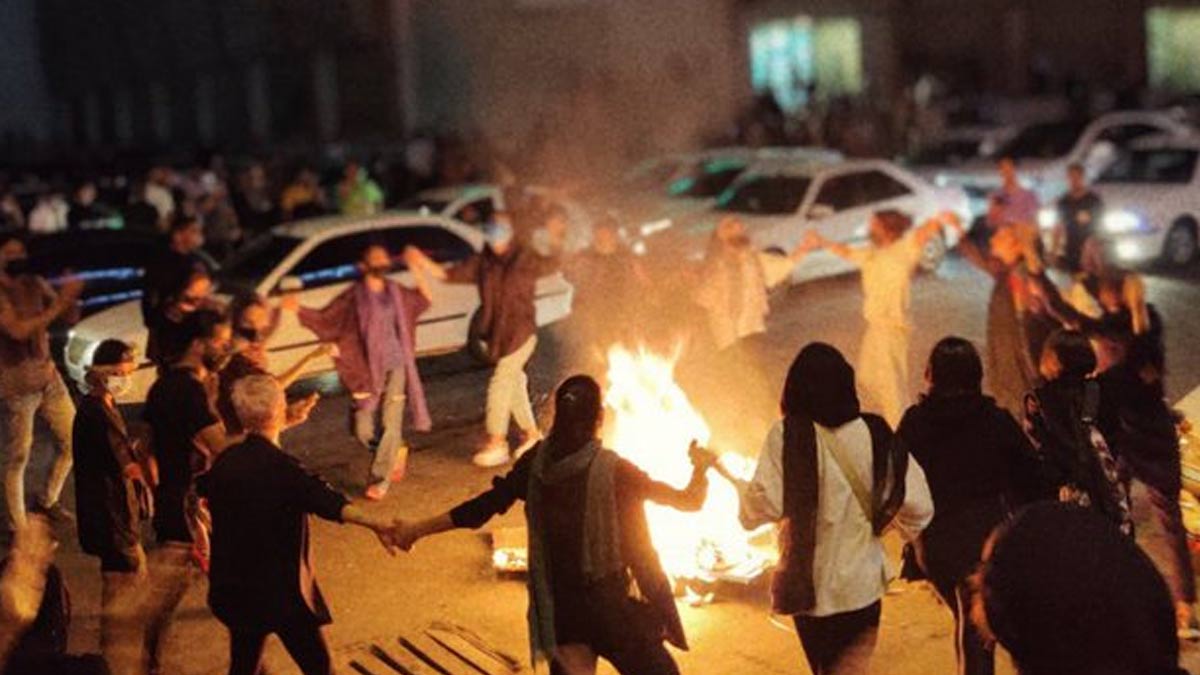
Women Burn Hijabs, Cut Hair: All You Need To Know About Iran’s Hijab Protest
Sparked by the death of a woman in custody, who was detained for allegedly breaking hijab laws, women across Iran have been spearheading rising protests. Women across Iran are burning their hijabs, cutting their hair, and making flags out of them in the fifth successive day of unrest. At least seven women protestors have been reportedly killed in the last five days.
Mahsa Amini’s Death In Custody
On September 16, 2022, a 22-year-old Kurdish woman, Mahsa Amini, from the north-western city of Saqez, died in hospital after spending three days in a coma. She was with her brother in Tehran when she was arrested, on September 13, by Iran’s “morality police” who accused her of wearing an “improper” hijab. She slipped into a coma shortly after collapsing at Vozara Detention Centre.
These women in #Iran’s northern city of Sari are dancing and burning their headscarves… anti-regime protests have now spread to dozens of cities from north to south, east to west… all triggered by the death of #MahsaAmini while in the custody of Iran’s morality police. pic.twitter.com/BBDvgC5L1w
— Rana Rahimpour (@ranarahimpour) September 20, 2022
UN Human Rights’ Take On The Incident
According to a report by the United Nations Human Rights, there are reports stating Amini was hit on the head with a baton, and her head was also banged against one of the police vehicles by the “morality police”. However, the authorities denied such claims and cited natural causes of death and said she had suffered “sudden heart failure”. Amini’s family said she was fit and healthy.
Don't Miss:Latest Releases To Watch On Netflix, Amazon Prime & Hotstar This Weekend
“Mahsa Amini’s tragic death and allegations of torture and ill-treatment must be promptly, impartially and effectively investigated by an independent competent authority, that ensures, in particular, that her family has access to justice and truth,” said acting UN High Commissioner for Human Rights, Nada Al-Nashif.
Al-Nashif expressed alarm at Amini’s death, and the violent response by security forces to ensuing protests, on September 20. She said the compulsory veiling laws remain of concern in Iran, where appearing in public without a hijab is punishable by imprisonment.
1
2
3
4
Iranians are so frustrated, their anger is exploding in the streets. The international community needs to support them in determining their own future. pic.twitter.com/cjYOU4HTcG
— Masih Alinejad 🏳️ (@AlinejadMasih) September 21, 2022
Protest Across Iran
Thousands have taken to the streets of Iran including in Tehran, Isfahan, Karaj, Mashhad, Rasht, Saqqes, and Sanandaj to protest against Amini’s death. The protests are being frontlined by women. The police and security forces have responded with live ammunition, pellet guns, and teargas.
At least seven have been killed in the protests so far, including a 16-year-old girl who was shot dead. Around 450 people have been wounded and 500 arrested. Severe internet restrictions have been imposed across the country, the most severe since the November 2019 Mahshahr massacre. Mobile networks have been largely shut down, while observing regional disruptions during the protests and restrictions on social media including WhatsApp and Instagram.
Slogans such as ‘Death to Dictator’, ‘Woman, Life, Freedom’, and ‘No to the headscarf, no to the turban, yes to freedom and equality!’ have been raised during the protest. Iranians took to the streets supporting the protesting women in demand for change in the country’s regime. Iran has been officially under the regime of the Islamic Republic for over 40 years now.
This is the most beautiful flag I've ever seen in my life, will go down in history as a symbol of freedom…#IranProtests2022#مهسا_امینی#MashaAminipic.twitter.com/EgB4lXepk7
— özgün demirel (@ozgundemirel) September 21, 2022
What are Iran’s Hijab Laws?
After the 1979 Islamic Revolution, the new Iranian government imposed a mandatory dress code that forced women to wear a headscarf or hijab and loose-fitting clothing that disguises their figures in public.
Don't Miss:Covid-19 Pandemic, Natural Disasters Are 'Gender-Biased' Against Women Shows Oxfam Study
A ‘morality police’, formally known as ‘Gasht-e-Ershad’ (Guidance Patrols), are tasked across the country to ensure that women conform to the authorities’ interpretation of “proper” clothing. This gives them the power to stop women and assess whether they are showing too much hair, the length and fitting of trousers and overcoats, or their amount of make-up. For any of these violations, women can be fined, imprisoned, or flogged as a punishment.
Also Watch:
1
2
3
4